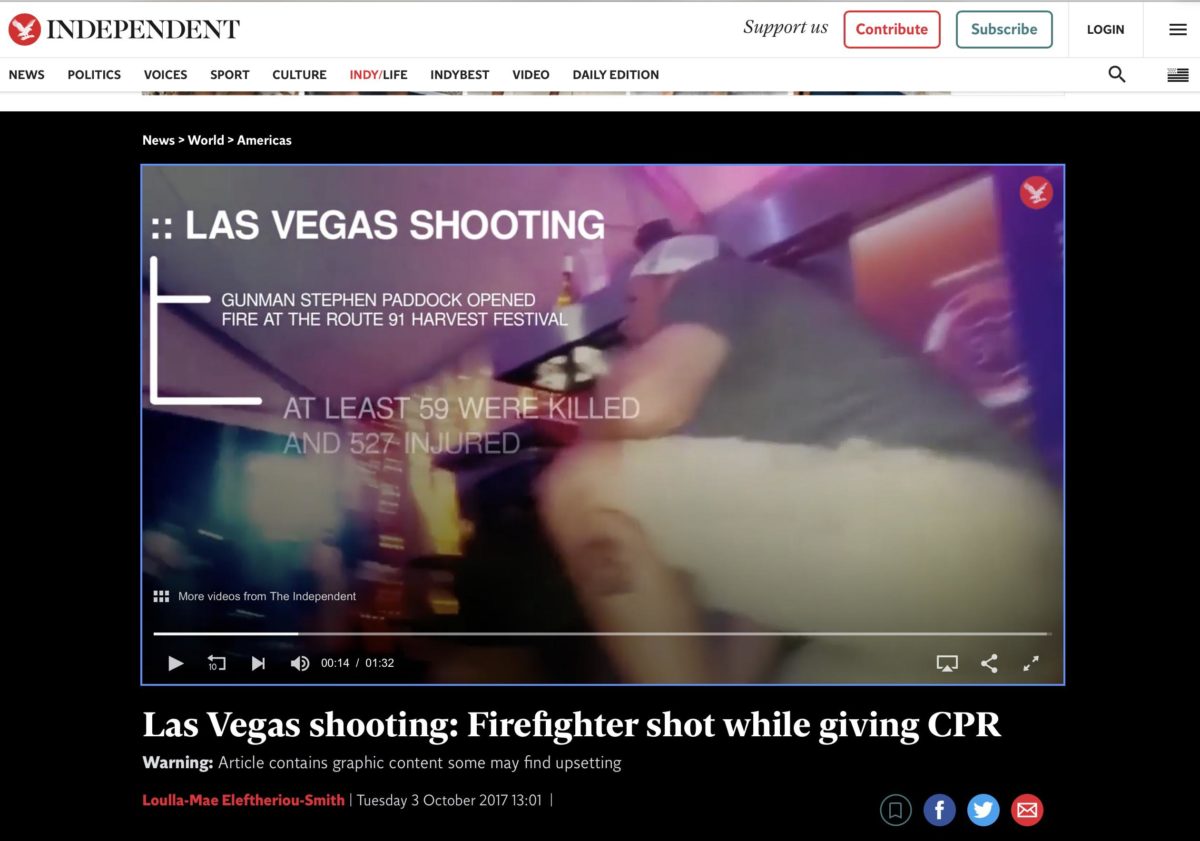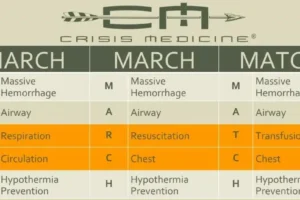
UPDATED: Prehospital resuscitation of traumatic cardiac arrest?
🕖 Reading Time, 8 minutes
UPDATE: Is trying to resuscitate trauma patients with prehospital cardiac arrest futile?
Conventional wisdom was that it was futile because the expectation of survival was too low. Newer research shows survival rates may be higher than we historically believed. However, the survival rates are still too low to justify the risk to rescuers in high-risk environments.
However, the survival rates are still too low to justify the risk to rescuers in civilian high-risk environments. Traumatic arrest in a military setting may be survivable, provided the tactical problem is stabilized rapidly enough to allow casualty evacuation.
The National Association of EMS Physicians, in conjunction with the American College of Surgeons Committee on Trauma, produced guidelines in 2003 regarding the decision to withhold or terminate resuscitation in trauma patients with Out of Hospital Cardiac Arrest (tOHCA). These guidelines suggest not resuscitating blunt or penetrating trauma patients who have no detectable pulse, are apneic, and are without signs of life.
A 2011 review of 294 patients with prehospital traumatic cardiac arrest, all of whom met the guidelines for withholding resuscitation, but were resuscitated anyway, showed a survival rate of 0.3%. The one surviving patient had a GCS of 6 upon discharge. Although another six (of the 294) physically survived, they were felt to be “neurologically devastated” and had GCS scores below 6 at discharge:1 This is not what we would generally call a “successful resuscitation”.
Other studies have cited survival rates for tOHCA which are much better. One of the highest survival rates published was out of Seattle and the King County Medic One program.2 They showed a 7.6% survival rate for these patients. However, if we look in-depth at the study (rather than just the abstract), several important details emerge questioning their survival statistic. One issue was that half of the survivors were spontaneously breathing on EMS evaluation, despite being pulseless.
Additionally, there was also a disagreement between BLS and ALS responders on whether the patients had pulses in fully one-half of the survivors. These patients were profoundly hypotensive but clearly had “signs of life.” They should be resuscitated but removed from a study looking at tOHCA. Ultimately, their survival rate was likely approximately 3% when you remove the patients who were breathing or had a pulse on the arrival of EMS. Lastly, the article did not mention the neurological status on discharge of the survivors. Resuscitating severely damaged brains is not our goal.
Several studies out of Germany have shown tOHCA survival rates of 7% or higher.3,4 However, those EMS systems use prehospital Emergency Physicians for resuscitation, making their results not generalizable to non-physician based EMS. Additionally, despite this study’s high survival rate, only 24% of their survivors were intact enough to be discharged home: This makes their good neurological status survival less than 2% of those resuscitated for tOHCA.3
A separate study looking at tOHCA in Berlin4 ultimately had a 1.8% “good neurologic status” survival. Their definition of good status included “moderate” or low disability. Ten of their fifteen survivors had severe disability, and one was left in a permanent vegetative state. Three out of 4 survivors in the “good” category had moderate disability.
Although the Berlin article itself quotes a 29% survival rate, the researchers chose to only attempt resuscitation on 101 out of their total 440 patients. Therefore, the overall survival on all tOHCA is fully three-quarters lower than the 29% published. It is unclear from the study how they selected those they tried to resuscitate.
Another article cited a 5% survival for tOHCA, but noted in two of their four survivors, electrocution, with resulting hypoxia was felt to have been a cause.5 Electrocution isn’t exactly the same as being shot, stabbed, or blown up, so their data is not directly relatable to more traditional traumatic cardiac arrest.
In yet another study including both adults and pediatric trauma patients with tOHCA, there was a 2 to 3% survival, but only 41% of the survivors were neurologically normal afterwards. Children seemed to survive with poorer neurological function than adults.6
The UK experience is similar with a 3.8% survival for tOHCA, but no mention of the neurological status of the survivors.7
What does all of this mean? The actual survival rate of out of hospital traumatic cardiac arrest is likely to be around 2%, and less than half of the surviving patients will be neurologically normal afterward. Although this is a substantially higher survival than the 0.3% quoted by NAEMSP and ACS COT, it is still a pretty dismal statistic. Additionally, in high-risk (unstable building, fire) and active violent incidents, there would be such significant environmental risk to the rescuers as to render this higher survival percentage moot.
Interestingly, research on military trauma patient’s, both US and UK, with traumatic cardiac arrest has shown a 13% thirty day survival post arrest. Once again though we still don’t have robust data on how many are neurologically normal after their arrest. Extrapolating from the prior literature showing less than half of survivors are neurologically normal, the military good neurologic survival rate might be 7%, which is pretty legitimate.
This marked increase in survival compared to their civilian counterparts is speculated to be a byproduct of the relatively young, athletic and otherwise healthy population injured in the military. How does this effect clinical practice? In a military setting, if the tactical problem can be stabilized enough to allow rapid evacuation of the arrested casualty, there may be a role for starting CPR during evacuation if the casualty arrests. As always, the tactical situation drives all care. Risking the potential of more wounded and killed to perform CPR on a military traumatic arrest casualty, even with an increased survival rate will rarely benefit the tactical problem at hand.8
Whether the actual civilian survival rate of traumatic OHCA is 0.3% or 2% won’t really matter when bullets are flying, glass is breaking, and the ceiling is coming down on you.
The NAEMSP and ACS COT guidelines are still very appropriate for civilian high-risk environments. If the scene is truly safe, EMS has the resources, and no other casualties, you can always hope for the 2% and work your traumatic cardiac arrest.
TRAIN NOWOnline Tactical Casualty Care Classes
1 Mollberg NM, Wise SR, et all. The Consequences of Noncompliance with Guidelines for Withholding or Terminating Resuscitation in Trauma Cardiac Arrest Patients. J Trauma, 2011 OCT;71(4):997-1002
2 Pickens JJ, Copass MK, et all. Trauma Patients Receiving CPR: Predictors of Survival. J Trauma, 2005;58:951-958.
3 Grasner JT, Wnent J, et all. Cardiopulmonary resuscitation traumatic cardiac arrest – there are survivors. An analysis of two national emergency registries. Critical Care 2011. 15;R276
4 Kleber C, Giesecke MT, et all. Requirement for a structured algorithm in cardiac arrest following major trauma: Epidemiology, management errors, and preventability of traumatic death in Berlin. Resuscitation, 2014;85(3):405-410.
5 Willis CD, Cameron PA, et all. Cardiopulmonary Resuscitation After Traumatic Cardiac Arrest is Not Always Fatal. Injury 2006 May;37(5):448-454.
6 Zwingmann J, Melhorn AT, et all. Survival and neurologic outcome after traumatic out of hospital cardiopulmonary arrest in pediatric and adult population: a systematic review.
7 Barnard EB, Sandbach DD, et all. Prehospital determinants of successful resuscitation after traumatic and non-traumatic out of hospital cardiac arrest. Emerg Med J 2019;36:333-339.
8 Anderson KL, Mora AG, Bloom AD, Maddry JK, Bebarta VS. Cardiac massage for trauma patients in the battlefield: An assessment for survivors. Resuscitation. 2019 May;138:20-27.



